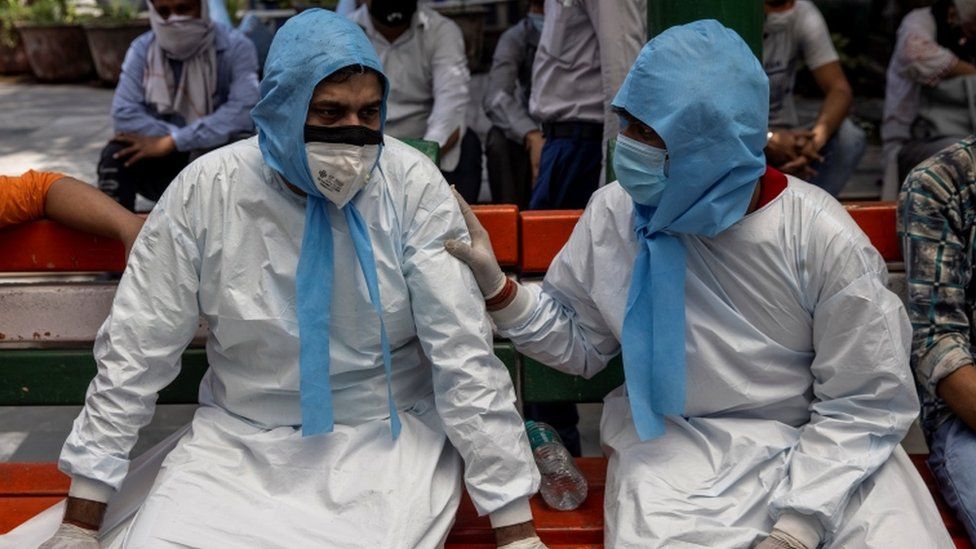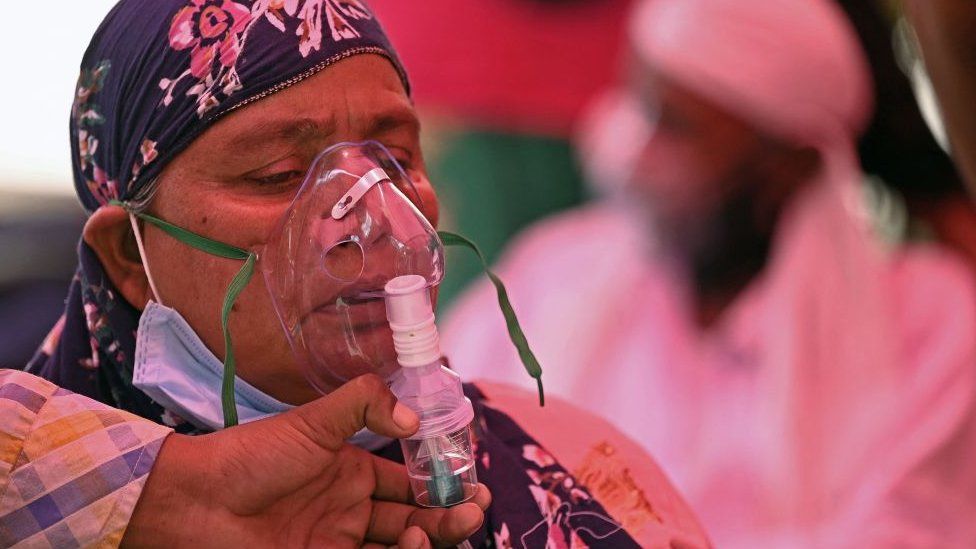The Senate is considering Eric S. Lander’s nomination after months of delay. Some experts ask what impact an adviser can actually have.On the campaign trail, Joseph R. Biden Jr. vowed to unseat Donald J. Trump and bring science back to the White House, the federal government and the nation after years of presidential attacks and disavowals, neglect and disarray.As president-elect, he got off to a fast start in January by nominating Eric S. Lander, a top biologist, to be his science adviser. He also made the job a cabinet-level position, calling its elevation part of his effort to “reinvigorate our national science and technology strategy.”In theory, the enhanced post could make Dr. Lander one of the most influential scientists in American history.But his Senate confirmation hearing was delayed three months, finally being set for Thursday.The delay, according to Politico, arose in part from questions about his meetings with Jeffrey Epstein, the financier who had insinuated himself among the scientific elite despite a 2008 conviction that had labeled him as a sex offender. Dr. Lander met with Mr. Epstein at fund-raising events twice in 2012 but has denied receiving any funding or having any kind of relationship with Mr. Epstein, who was later indicted on federal sex trafficking charges and killed himself in jail in 2019.The long delay in his Senate confirmation has led to concerns that the Biden administration’s elevation of Dr. Lander’s role is more symbolic than substantive — that it’s more about creating the appearance of strong federal support for the scientific enterprise rather than working to achieve a productive reality.Roger Pielke Jr., a professor at the University of Colorado, Boulder, who has interviewed and profiled presidential scientific aides, recently noted that one of President Biden’s top scientific agendas, climate policy, has moved ahead briskly without any help from a White House science adviser.“Is Biden giving him busy work?” he asked of Dr. Lander’s role. “Or is there actually a policy portfolio?”Likewise, Mr. Biden’s first proposed federal budget, unveiled April 9, received no public endorsement from the presidential science adviser but nonetheless seeks major increases in funding at nearly every science agency.Mr. Biden’s championing of the science post and its unpunctual start have raised a number of questions: What do White House science advisers actually do? What should they do? Are some more successful than others and, if so, why? Do they ever play significant roles in Washington’s budget wars? Does Mr. Biden’s approach have echoes in history?The American public got few answers to such questions during Mr. Trump’s tenure. He left the position empty for the first two years of his administration — by far the longest such vacancy since Congress in 1976 established the modern version of the advisory post and its White House office. Under public pressure, Mr. Trump filled the opening in early 2019 with Kelvin Droegemeier, an Oklahoma meteorologist who kept a low profile. Critics derided Mr. Trump’s neglect of this position and the vacancies of other scientific expert positions across the executive branch.President Richard Nixon with his science adviser, Edward E. David Jr., center, in 1971. Mr. Nixon eliminated the position after Dr. David quit in 1973.Associated PressBut while scientists in the federal work force typically have their responsibilities defined in considerable detail, each presidential science adviser comes into the job with what amounts to a blank slate, according to Shobita Parthasarathy, director of the Science, Technology and Public Policy program at the University of Michigan.“They don’t have a clear portfolio,” she said. “They have lots of flexibility.”The lack of set responsibilities means the aides as far back as 1951 and President Harry S. Truman — the first to bring a formal science adviser into the White House — have had the latitude to take on a diversity of roles, including ones far removed from science.“We have this image of a wise person standing behind the president, whispering in an ear, imparting knowledge,” said Dr. Pielke. “In reality, the science adviser is a resource for the White House and the president to do with as they see fit.”Dr. Pielke argued that Mr. Biden is sincere in wanting to quickly rebuild the post’s credibility and raise public trust in federal know-how. “There’s lots for us to like,” he said.But history shows that even good starts in the world of presidential science advising are no guarantee that the appointment will end on a high note.“Anyone coming to the science advisory post without considerable experience in politics is in for some rude shocks,” Edward E. David Jr., President Richard M. Nixon’s science adviser, said in a talk long after his bruising tenure. He died in 2017.One day in 1970, Mr. Nixon ordered Dr. David to cut off all federal research funding to the Massachusetts Institute of Technology, Dr. David’s alma mater. At the time, it was receiving more than $100 million a year.The reason? The president of the United States had found the political views of the school’s president to be intolerable.“I just sort of sat there dumbfounded,” Dr. David recalled. Back in his office, the phone rang. It was John Ehrlichman, one of Mr. Nixon’s trusted aides.“Ed, my advice is don’t do anything,” he recalled Mr. Ehrlichman saying. The nettlesome issue soon faded away.In 1973, soon after Dr. David quit, Mr. Nixon eliminated the fief. The president had reportedly come to see the adviser as a science lobbyist. After Mr. Nixon left office, Congress stepped in to reinstate both the advisory post and its administrative body, renaming it the White House Office of Science and Technology Policy.The position, some analysts argue, has grown more influential in step with scientific feats and advances. But others say the job’s stature has declined as science has become more specialized and the advisory work has focused increasingly on narrow topics unlikely to draw presidential interest. Still others hold that so many specialists now inform the federal government that a chief White House scientist has become superfluous.Daniel Sarewitz, a professor of science and society at Arizona State University, argued in a 2007 study that the post’s influence “has waxed and waned (mostly waned) with time.”President Bill Clinton with the crew of the space shuttle Discovery, as well as Daniel S. Goldin, second right, the NASA administrator and Neal F. Lane, right, the presidential science adviser, in 1999.The White House/CNP/MediaPunch, via AlamyBut Mr. Biden’s moves, he added in an interview, were now poised to raise the post’s importance and potential sway. “For Democrats,” he said, “science and politics are converging right now, so elevating the status of science is smart. It’s good politics.”The scientific community tends to see presidential advisers as effective campaigners for science budgets. Not so, Dr. Sarewitz has argued. He sees federal budgets for science as having done well over the decades irrespective of what presidential science advisers have endorsed or promoted.Neal F. Lane, a physicist who served as President Bill Clinton’s science adviser, argued that the post was today more important than ever because its occupant provides a wide perspective on what can best aid the nation and the world.“Only the science adviser can be the integrator of all these complex issues and the broker who helps the president understand the play between the agencies,” he said in an interview. The moment is auspicious, Dr. Lane added. Catastrophes like war, the Kennedy assassination and the terrorist attacks of 2001, he said, can become turning points of reinvigoration. So too, he added, is the coronavirus pandemic a time in American history when “big changes can take place.”His hope, he said, is that Mr. Biden will succeed in elevating such issues as energy, climate change and pandemic preparedness.As for the federal budget, Dr. Lane, who headed the National Science Foundation before becoming Mr. Clinton’s science adviser from 1998 to 2001, said his own experience suggested the post could make modest impacts that nonetheless reset the nation’s scientific trajectory. His own tenure, he said, saw a funding rise for the physical sciences, including physics, math and engineering.Some part of his own influence, Dr. Lane said, derived from personal relationships at the White House. For instance, he got to know the powerful director of the Office of Management and Budget, which set the administration’s finances, while dining at the White House Mess.The advisory post becomes most influential, analysts say, when the science aides are aligned closely with presidential agendas. But a commander in chief’s objectives may not match those of the scientific establishment, and any influence bestowed by proximity to the president may prove quite narrow.George A. Keyworth II, President Ronald Reagan’s science adviser from 1981 to 1986.George Tames/The New York TimesGeorge A. Keyworth II was a physicist from Los Alamos — the birthplace of the atomic bomb in New Mexico. In Washington, as science adviser to Ronald Reagan, he strongly backed the president’s vision of the antimissile plan known as Star Wars.Dr. Pielke of the University of Colorado said the contentious issue became Dr. Keyworth’s calling card in official Washington. “It was Star Wars,” he said. “That was it.” Despite intense lobbying, the presidential call for weapons in space drew stiff opposition from specialists and Congress, and the costly effort never got beyond the research stage.Policy analysts say Mr. Biden has gone out of his way to communicate his core interests to Dr. Lander — a geneticist and president of the Broad Institute, a hub of advanced biology run by Harvard University and M.I.T.On Jan. 15, Mr. Biden made public a letter with marching orders for Dr. Lander to consider whether science could help “communities that have been left behind” and “ensure that Americans of all backgrounds” get drawn into the making of science as well as securing its rewards.Dr. Parthasarathy said Mr. Biden’s approach was unusual both in being a public letter and in asking for science to have a social conscience. In time, she added, the agenda may transform both the adviser’s office and the nation.“We’re at a moment” where science has the potential to make a difference on issues of social justice and inequality, she said. “I know my students are increasingly concerned about these questions, and think rank-and-file scientists are too,” Dr. Parthasarathy added. “If ever there was a time to really focus on them, it’s now.”
Read more →







